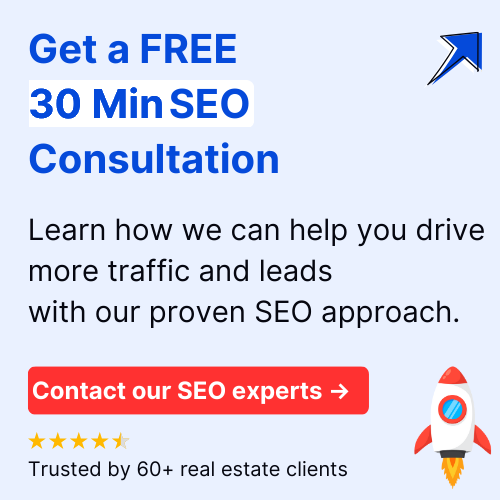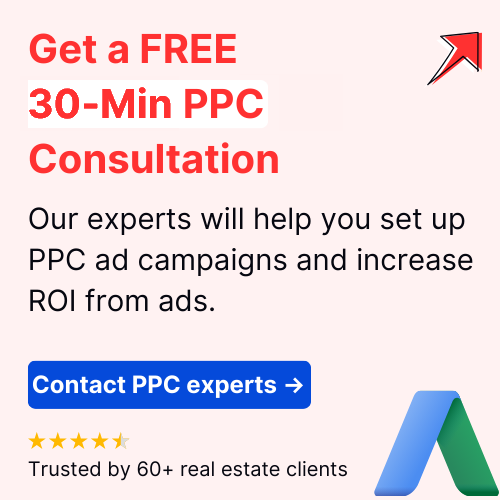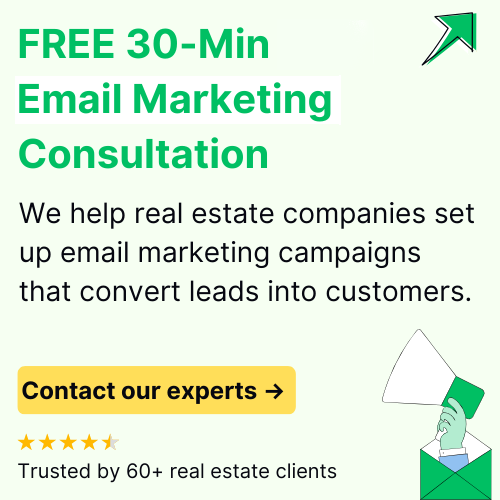Real Estate Sales Funnel: A Complete Guide For 2024
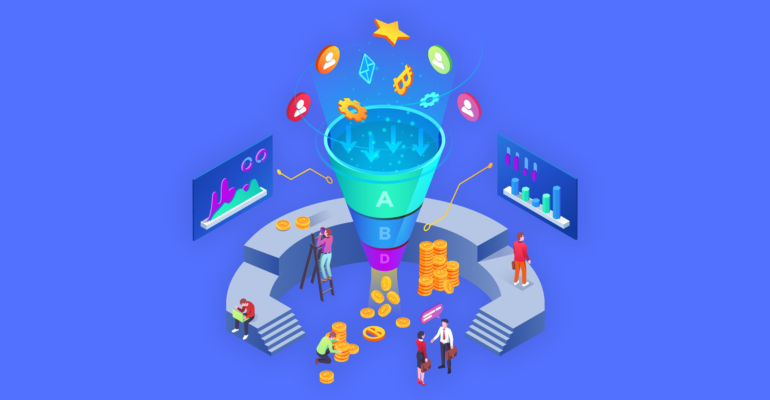
Real Estate Sales Funnel: A Complete Guide For 2024
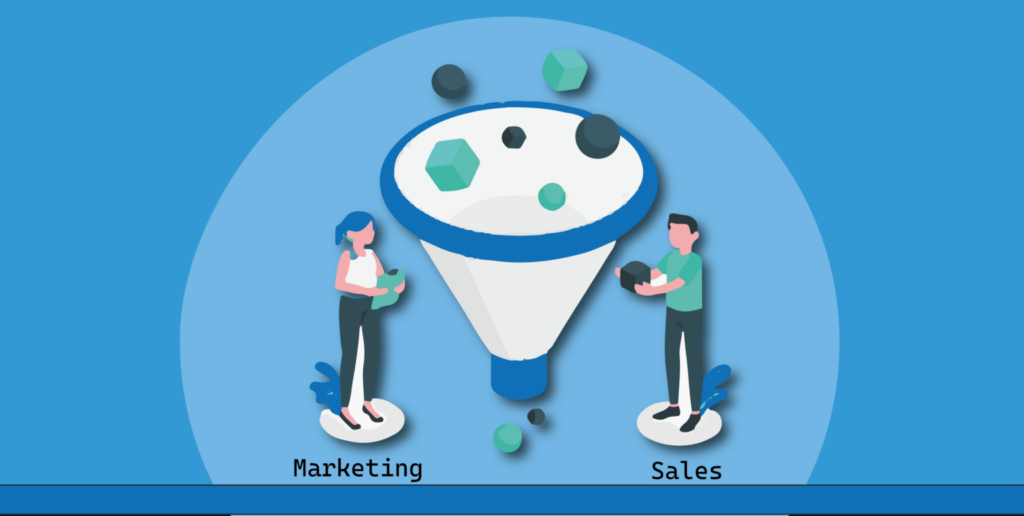
The real estate market is ever-evolving and demands you to adapt to its changes. While there is a massive shift to digital, what hasn’t changed is the need for a strong sales strategy.
The term ‘Sales Funnel’ can be confusing. But think of it as your trustworthy GPS leading you through each step of the journey – from the first point of contact with a potential buyer or seller to closing the deal.
It’s like having a roadmap to success in an ever-changing marketplace.
In this blog, we’ll explore the real estate sales funnel, how it differs from the real estate marketing channel, and how you can leverage it to drive your business forward.
Table of Contents
What is a Sales Funnel in real estate?
Imagine you’ve got this amazing house for sale in a lovely neighborhood and want to find the right buyer for it.
Think of a sales funnel as a step-by-step process that helps you guide potential buyers from the beginning to the end where they purchase it.
It is the process of nurturing potential leads to convert them into actual buyers or sellers.
What is the difference between a sales funnel and a marketing funnel?
A real estate sales funnel and a real estate marketing funnel are related concepts, but they are distinct and serve different purposes.
Real estate marketing funnel
When you want to sell a property, your first step is to create interest or awareness in what you’re selling. What was initially done via word-of-mouth is now done through various marketing channels.
The marketing funnel is all about creating a buyer’s persona, targeting them through ad campaigns and other marketing strategies, engaging them with valuable content, and leading them to the beginning of the sales funnel.
The marketing funnel helps you capture the attention of potential customers and guide them toward purchasing.
It forms the foundation of a real estate sales funnel. It helps strangers turn into people who might be interested in your services.
Real estate sales funnel
Now that the “stranger” or someone who had no clue about your service is interested in your offerings, the sales funnel comes into play.
The sales funnel is responsible for taking the potential buyer through the journey of reaching the buying decision and nurturing the clients even after the sale is successful.
During the sales funnel stage, the ultimate goal is to convert the prospect into a paying customer. The sales team makes calls, gives demos, shows the property, and helps the customer decide to purchase or sell a property.
Learn more about holiday marketing ideas to drive more leads and conversion for your rel estate business.
What are the stages of a sales funnel?
You might have heard phrases like ‘top of the sales funnel’ or ‘bottom of the funnel’ and would’ve wondered what that means.
There are five to six stages to any business’ sales funnel. Typically, it is divided into three broad categories: the top, middle, and bottom.
For a better understanding, we’ve divided the sales funnel stages into 6 steps:
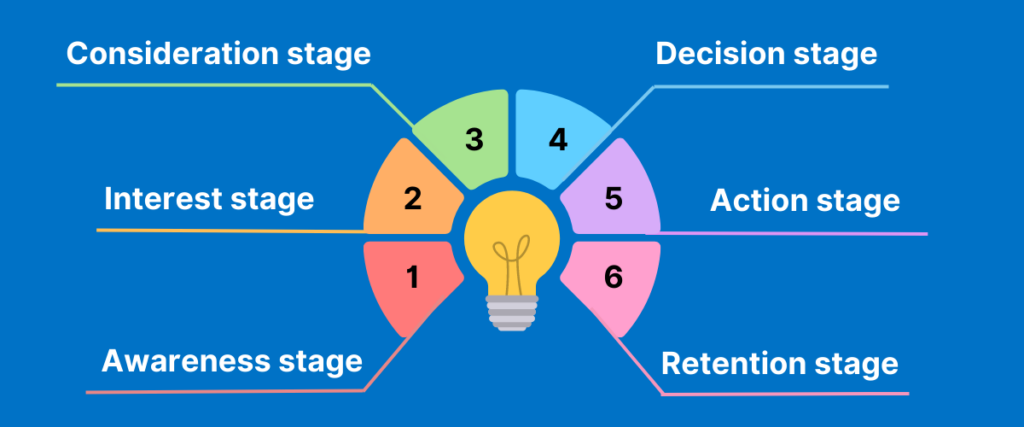
Top of the funnel:
- Awareness
- Interest
Middle of the funnel:
- Consideration
- Decision
Bottom of the funnel:
- Action
- Retention
1. Awareness
At the top of the sales funnel, your goal is to generate awareness and capture the attention of potential clients in the real estate market. You can use various marketing channels to do this.
For example, you might use social media platforms like Facebook, Instagram, or LinkedIn to showcase your expertise, share property listings, and engage with your audience.
You can also run targeted PPC ad campaigns to reach people actively searching for real estate services in your area.
Suppose you’re a real estate agent specializing in luxury properties. You could create visually appealing social media posts featuring stunning high-end properties and share insightful content about the luxury real estate market.
This creates awareness among potential clients who aspire to buy or sell luxury properties and positions you as an expert in that niche.
Want to start your PPC campaigns and drive leads for your real estate brand? Check out our guide on how much does real estate PPC campaigns cost.
2. Interest
Once you have caught the attention of potential clients, the next step is to nurture their interest and keep them engaged.
This stage involves providing valuable information, building credibility, and establishing trust.
Offer free resources such as informative blog posts, e-books, or webinars that educate your audience about the real estate process, market trends, or investment opportunities.
As a real estate agent, you could create a comprehensive e-book titled “The ultimate guide to buying your dream home” that covers everything from finding the right neighborhood to negotiating a favorable deal.
You can capture the interest of potential clients actively searching for information by offering this valuable resource for free on your website or through social media.
Also, you can achieve the goal of positioning yourself as a helpful and knowledgeable resource.
3. Consideration
At this stage, your prospects are actively considering working with you but are also exploring other options.
Your task is to differentiate yourself and demonstrate why you’re the best choice.
Share success stories and client testimonials highlighting your track record of helping clients achieve their real estate goals.
Let’s say a potential client is considering selling their home and is evaluating multiple real estate agents.
You can also offer a free virtual home evaluation where you provide personalized insights and recommendations to help potential clients understand the market value of their property.
You increase the chances of being selected as their trusted real estate partner by offering personalized attention and showcasing your expertise.
4. Decision
Your prospects have reached the decision stage, where they are ready to choose a real estate agent or company to work with.
At this crucial point, you need to make it easy for them to move forward and seal the deal.
Provide clear pricing options, transparent contracts, and paperwork to facilitate a smooth transition. Address any concerns or questions they have promptly and confidently to instill trust and confidence in your services.
Once the potential client has decided to sell their home and chooses you as their agent, you can present them with a clear and easy-to-understand commission structure and contract terms.
Walk them through the entire process, explaining each step and ensuring they clearly understand what to expect.
5. Action
Congratulations, your prospects have now become paying clients!
The action stage involves delivering on your promises and providing exceptional service throughout the transaction.
During the home buying or selling process, provide regular updates to your clients, such as sharing property listings that match their preferences, arranging property viewings, or presenting offers.
Be proactive in anticipating and addressing any issues that might come up, such as coordinating with inspectors or resolving legal matters.
By going above and beyond to provide a smooth and successful transaction, you not only satisfy your clients but also increase the likelihood of receiving positive reviews and referrals.
6. Retention
The final stage focuses on maintaining a positive relationship with your clients beyond the initial transaction.
Stay connected with your clients. Follow up periodically with helpful information related to homeownership, such as home maintenance tips, local market updates, or investment opportunities.
Offer assistance with post-transaction needs, such as recommending trusted contractors or providing insights on property value appreciation.
You can consider implementing a referral program to encourage satisfied clients to refer their friends, family, or colleagues to your services.
Offer incentives such as discounts on future transactions or exclusive access to special events.
You can maximize the value of each client and increase the likelihood of repeat business and referrals by focusing on client retention and cultivating long-term relationships.
Why is the sales funnel important in real estate?
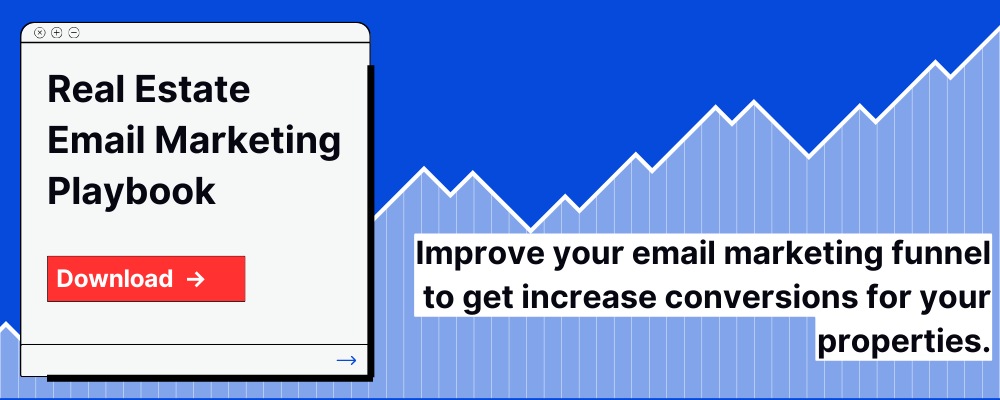
The real estate buyer’s journey is slow and long. Since the investment is significant, convincing potential leads to buy or sell is challenging and requires consistent efforts.
At the beginning of their career, every real estate agent or company faces the problem of potential leads dropping the idea of buying or selling mid-way.
That can be frustrating, and all your efforts seem fruitless. The sales funnel helps you effectively guide potential buyers or sellers through purchasing or selling a property.
Like a funnel used in the kitchen or elsewhere, the sales funnel is designed to capture and filter prospects, narrowing them down to the most serious and motivated ones so you can utilize your time, money and resources effectively!
Let’s break down why the sales funnel is so important:
1. Lead generation
The sales funnel helps real estate professionals generate leads and identify potential clients. You can attract prospects and move them into the sales funnel using various marketing strategies, such as online advertising, social media, referrals, and networking.
2. Qualifying leads
Not all leads are ready to buy or sell immediately. The sales funnel allows you to qualify leads based on their level of interest, motivation, and readiness.
You don’t need to discard disinterested leads, but you can prioritize efforts and allocate resources effectively.
3. Nurturing relationships
Real estate transactions often involve a lengthy decision-making process. The sales funnel provides a framework for staying in touch with leads and building relationships over time.
You can use email marketing, personalized follow-ups, and relevant content to educate and engage prospects, gradually moving them through the funnel.
4. Identifying opportunities
As leads progress through the sales funnel, real estate professionals can identify opportunities for upselling or cross-selling.
You can offer additional services or properties that align with their requirements and maximize revenue potential by understanding the needs and preferences of clients.
5. Streamlining the sales process
The sales funnel provides clarity and structure to the sales process, making sure that no potential leads fall through the cracks.
It helps you track their interactions, monitor the status of each lead, and identify potential bottlenecks or areas for improvement.
6. Closing deals and forecasting sales
The ultimate goal of the sales funnel is to convert leads into clients and close real estate transactions.
The funnel helps you track your deals, and by analyzing trends, you can forecast the performance of your real estate business.
How to create a high-converting real estate sales funnel in 7 steps?
Step 1: Define Your Target Audience
To build an effective sales funnel, you need to know your ideal customers. Start by identifying your ideal clients and understanding their needs, preferences, and pain points. Are you targeting first-time homebuyers, empty nesters, or investors?
Factor in the demographics, location, income level, and specific real estate needs. This will help you tailor your marketing efforts to reach the right people.
Step 2: Create an Attractive Lead Magnet
A lead magnet is a valuable piece of content you offer potential clients in exchange for their contact information.
It could be an e-book, a checklist, a webinar, or any other resource that provides helpful information related to real estate. Make sure the lead magnet is compelling and addresses a common pain point or desire of your target audience.
Step 3: Build a Landing Page
Create a dedicated landing page on your website to showcase your lead magnet and capture leads.
Keep the design clean and professional, make sure the page clearly explains the benefits of your lead magnet, and include a clear call-to-action (CTA) prompting visitors to sign up.
Use persuasive copy and include a simple form for visitors to enter their contact information.
Note: A landing page is not the same as a property website.
Learn how much it will cost to build a conversion and SEO optimized real estate website.
Step 4: Drive Traffic to Your Landing Page
Now that your landing page is set up, it’s time to drive traffic to it. Utilize various marketing channels, such as:
- social media marketing for real estate
- pay-per-click advertising
- content marketing
- email marketing
- Search engine optimization (SEO)
Dig deep into real estate SEO cost and factors that affect the pricing.
Develop engaging content and use targeted ads to attract your ideal audience to your landing page.
Step 5: Nurture Leads with Email Marketing
Once you’ve captured leads, it’s important to nurture them through email marketing.
Set up an automated email sequence that delivers valuable content and builds a relationship with your leads.
Provide helpful tips, market updates, success stories, and personalized offers to keep them engaged and interested in your services.
Step 6: Convert Leads into Clients
At this stage, you’ve built a relationship with your leads and established your expertise. Now, it’s time to convert them into clients.
Offer a personalized consultation, a property tour, or a special promotion to encourage them to take the next step.
Provide exceptional customer service and be responsive to their inquiries to build trust and close the sale.
Step 7: Analyze and optimize
Continuously monitor and analyze your sales funnel’s performance.
Track key metrics such as conversion rates, open rates, click-through rates, and customer acquisition costs.
Identify areas for improvement and optimize your funnel accordingly. Test elements like headlines, CTAs, or email sequences to find what resonates best with your audience.
What are the key metrics for analyzing the real estate sales funnel?
There’s no point in building a real estate sales funnel if we can’t track how it’s performing, how it affects your business, and if it helps convert real estate leads into clients.
But what metric should we track to understand the success rate of our sales funnel?
1. Leads generated
Leads mark the entry point in the funnel, and tracking it helps you measure the success rate of your sales funnel.
It measures the number of potential clients that you attract through various marketing channels.
It could include website visits, inquiries through forms, newsletter sign-ups, phone calls, walk-ins, or referrals.
By tracking this metric, you can evaluate the effectiveness of your marketing campaigns, such as online ads, social media promotions, or direct mail.
Also, tracking the source of these leads is equally essential. Where are most of your high-quality leads coming from? Which channel isn’t generating leads? It’ll help you focus on strategies that yield the best results.
2. Conversation rate
The conversion rate tells how many leads convert into qualified prospects or clients.
It is calculated by dividing the number of converted leads by the total number of leads generated.
CR = Number of converted leads/ Total leads generated * 100
A high conversion rate indicates that your lead nurturing strategies, such as follow-up calls, personalized emails, or property showings, are effective.
If your conversion rate is low, it may indicate the need for better lead qualification or more compelling sales techniques.
3. Average days in the funnel
Tracking the average time it takes for a lead to move through your sales funnel, from the initial contact to closing a deal, helps you understand the speed and efficiency of your sales process.
You can identify potential bottlenecks or delays in your funnel and take steps to streamline your processes.
For example, if you notice leads spending too much time in a specific stage, you can adjust your communication or provide additional resources to move them forward.
4. Cost per acquisition (CPC)
How much does it cost to acquire a new client?
Cost per acquisition calculates the average cost incurred to acquire a new client. It considers the total expenses of marketing, lead generation, and sales efforts divided by the number of clients acquired.
Tracking it helps you assess the cost-effectiveness of your marketing channels and campaigns.
You can evaluate which marketing strategies or lead sources provide the highest return on investment (ROI) and allocate your resources accordingly.
5. Total Sales
One of the straightforward metrics to track, your total real estate sales represents the total number of properties sold and the combined value of those properties.
Tracking this metric allows you to assess the overall performance and success of your real estate sales funnel.
You can evaluate the effectiveness of your sales strategies, pricing strategies, and overall market conditions by analyzing your sales.
It provides a clear picture of the revenue generated and helps you set realistic goals for your real estate business.
It helps you identify trends and patterns in your sales performance. You can compare sales figures across different periods or property types to understand which segments of your business are thriving and which may require adjustments.
It also helps you evaluate the impact of any changes or improvements you implement in your sales processes.
6. Return on investment (ROI)
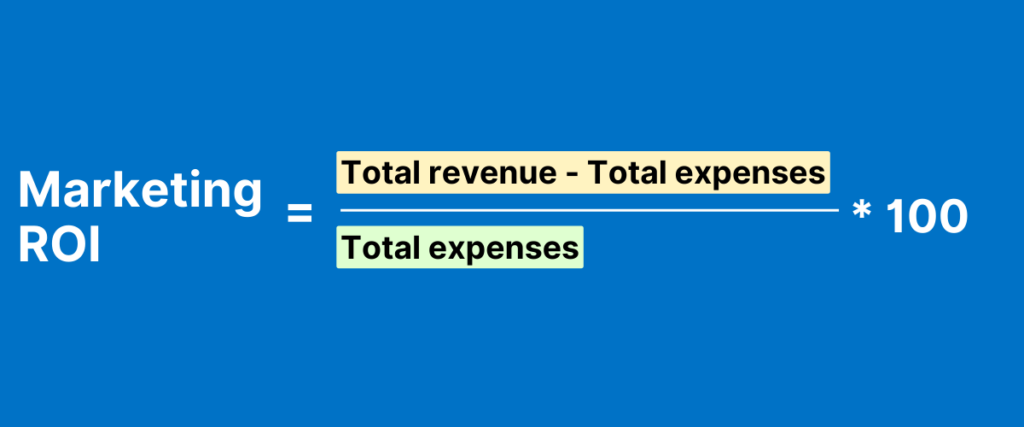
ROI measures the profitability of your marketing and sales activities. It compares the revenue generated from these efforts against the costs incurred.
To calculate ROI, subtract the total expenses from the total revenue, divide it by the total expenses, and multiply by 100 to get a percentage.
ROI = (Total revenue – total expenses)/ Total expenses *100
A positive ROI indicates that your investments are yielding profitable returns. You can identify the most effective approaches and make data-driven decisions to optimize your budget allocation by tracking ROI for marketing campaigns or lead generation strategies.
If you’re looking to improve your real estate business ROI using digital marketing channels, check out our services focused only on real estate:
- Real estate SEO services
- Real estate PPC services
- Real estate social media marketing services
- Real estate web development services
How much does a real estate sales funnel cost?
The cost of designing a real estate sales funnel can vary highly. It can start at $1000 and go up to $50,000 too. When outsourcing the building of a complete sales funnel for your real estate business, the cost can vary depending on several factors.
The price of a real estate sales funnel typically depends on:
1. The complexity of the funnel
A simple funnel with a few basic steps, such as lead capture, email automation, and lead nurturing, may have a lower price than a more intricate funnel with multiple stages, advanced automation, and customized features.
2. The services included
A comprehensive sales funnel package may include website development, landing page creation, lead generation strategies, content creation, email marketing campaigns, analytics tracking, and more. The more services you require, the higher the cost is likely to be.
3. Agency expertise and experience
Different agencies have varying pricing structures based on their expertise, reputation, and geographical location. Established agencies with a strong track record and a higher level of expertise may charge more for their services than smaller or less experienced agencies.
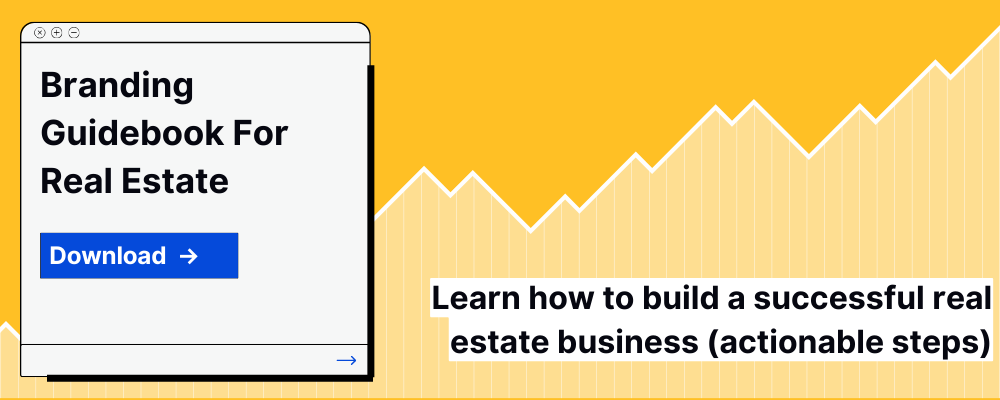
Key Takeaways
The real estate sales funnel is not a one-size-fits-all solution. It’s a flexible framework that can be customized to your unique needs and business goals.
By understanding its core concepts and applying them creatively, you can create a customized strategy that sets you apart from the competition and propels your success.
At UpInFifty, we can help you create a real estate marketing funnel that will be a strong foundation for your sales funnel.
For an in-depth discussion of how our marketing team can help you, contact us here. Let’s beat the competition and build your real estate business by multifolds!

